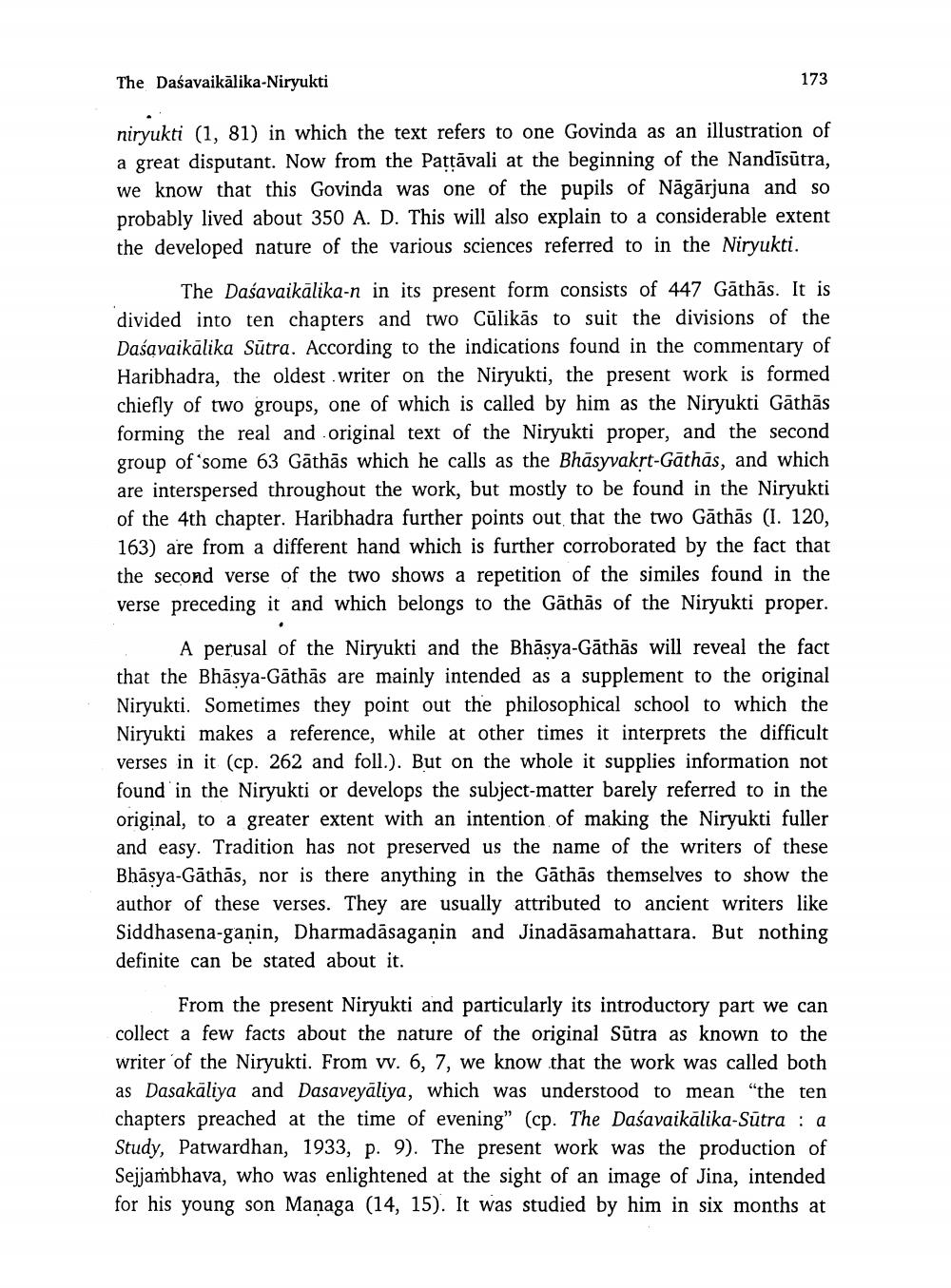________________
The Daśavaikālika-Niryukti
173
niryukti (1, 81) in which the text refers to one Govinda as an illustration of a great disputant. Now from the Pattāvali at the beginning of the Nandīsūtra, we know that this Govinda was one of the pupils of Nāgārjuna and so probably lived about 350 A. D. This will also explain to a considerable extent the developed nature of the various sciences referred to in the Niryukti.
The Daśavaikālika-n in its present form consists of 447 Gäthās. It is divided into ten chapters and two Cūlikās to suit the divisions of the Dasąvaikālika Sūtra. According to the indications found in the commentary of Haribhadra, the oldest writer on the Niryukti, the present work is formed chiefly of two groups, one of which is called by him as the Niryukti Gāthās forming the real and original text of the Niryukti proper, and the second group of some 63 Gāthās which he calls as the Bhāsyvakrt-Gathās, and which are interspersed throughout the work, but mostly to be found in the Niryukti of the 4th chapter. Haribhadra further points out that the two Gāthās (I. 120, 163) are from a different hand which is further corroborated by the fact that the second verse of the two shows a repetition of the similes found in the verse preceding it and which belongs to the Gāthās of the Niryukti proper.
A perusal of the Niryukti and the Bhāsya-Gāthās will reveal the fact that the Bhāsya-Gāthâs are mainly intended as a supplement to the original Niryukti. Sometimes they point out the philosophical school to which the Niryukti makes a reference, while at other times it interprets the difficult verses in it (cp. 262 and foll.). But on the whole it supplies information not found in the Niryukti or develops the subject matter barely referred to in the original, to a greater extent with an intention of making the Niryukti fuller and easy. Tradition has not preserved us the name of the writers of these Bhāsya-Gāthās, nor is there anything in the Gāthās themselves to show the author of these verses. They are usually attributed to ancient writers like Siddhasena-ganin, Dharmadásaganin and Jinadāsamahattara. But nothing definite can be stated about it.
From the present Niryukti and particularly its introductory part we can collect a few facts about the nature of the original Sūtra as known to the writer of the Niryukti. From w. 6, 7, we know that the work was called both as Dasakāliya and Dasaveyāliya, which was understood to mean "the ten chapters preached at the time of evening” (cp. The Daśavaikālika-Sūtra : a Study, Patwardhan, 1933, p. 9). The present work was the production of Sejjambhava, who was enlightened at the sight of an image of Jina, intended for his young son Managa (14, 15). It was studied by him in six months at




